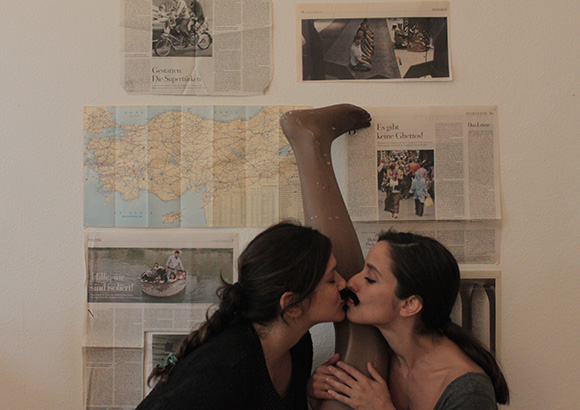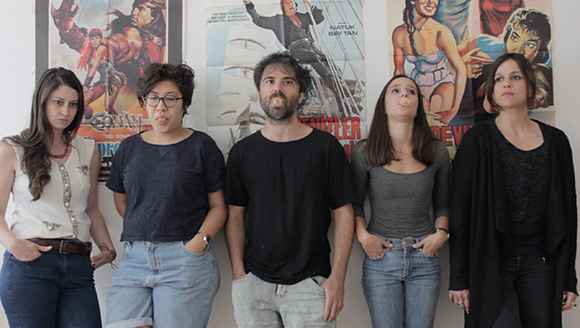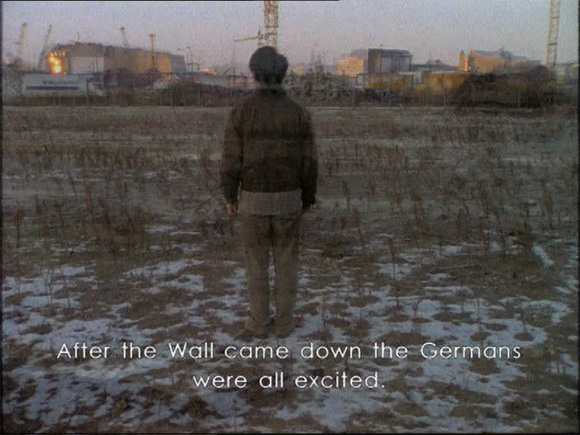KISS ME, GERMANY
The German national anthem, two young women with fake moustaches. In the middle: A leg, upside down. In the background: newspaper clippings of Turkish migration and so-called integration media debates, a map of Turkey, then a kiss. An ironic video piece as part of Deniz Sertkol’s series TRANSIT GERMANY.
Deniz Sertkol, D 2015, 2 min (premiere)
cinematography: Deniz Sertkol
with: Zeynep Akbal, Filiz Avunduk
language: no dialogue
guest: Deniz Sertkol
INSPIRE ME, GERMANY
Five people in front of a wall, chewing gum, waiting for inspiration. Bubbles bursting. Vintage action film posters in the background. Another video piece as part of Deniz Sertkol’s series TRANSIT GERMANY.
Deniz Sertkol, D 2015, 3 min (premiere)
cinematography:
with: Mert Akbal, Zeynep Akbal, Filiz Avunduk, Duyga Kaban
language: no dialogue
guest: Deniz Sertkol
GERMAN PEOPLE (DEUTSCHE MENSCHEN)
In 1933, Walter Benjamin was forced to publish under an Aryan pseudonym, “Detlef Holz,” for the many newspaper articles, essays and other writings that he completed during the Nazi regime’s rise to power. Notably, DEUTSCHE MENSCHEN (GERMAN PEOPLE) comprises a selection of letters by German historical figures.
This video is a collection of fragments of time spent in conversation with people named “Detlef Holz” throughout present-day Germany, including an art dealer in Frankfurt, a retiree and allotment gardener in Berlin, and an electrician in Hanover. Inquiring into their knowledge of Walter Benjamin, their family histories, varied East and West German backgrounds and current occupations, the film is a contemporary analogue to Benjamin’s own Deutsche Menschen.
(http://amiesiegel.net)
Amie Siegel, D 2007, 27 min
language: German (with English subtitles)
THE EMPTY CENTER (DIE LEERE MITTE)
DIE LEERE MITTE (THE EMPTY CENTER, 1998), a film directed and produced by Hito Steyerl, engages the space of Potsdamer Platz and the changes it has undergone over the past two hundred years, thereby discussing variegated borders that have existed on the site: religious, political, and economic. Yet organizing the film’s content temporally undoes its structural complexity: while the film presents itself as a documentary, its formal techniques thwart conventions of the genre. Thematically, it examines both discreet eras of history and broader imperialist forces at work in Germany or areas that it colonized.
(Christina Gerhardt: Transnational Germany: Hito Steyerl’s Film Die leere Mitte and Two Hundred Years of Border Crossings. In: Women in German Yearbook, Vol. 23 (2007), pp. 205-223.)
Hito Steyerl, D 1998, 62 min
cinematography: Meike Birck, Boris Schafgans, Hito Steyerl
language: German (with English subtitles)
Courtesy of gallery KOW






